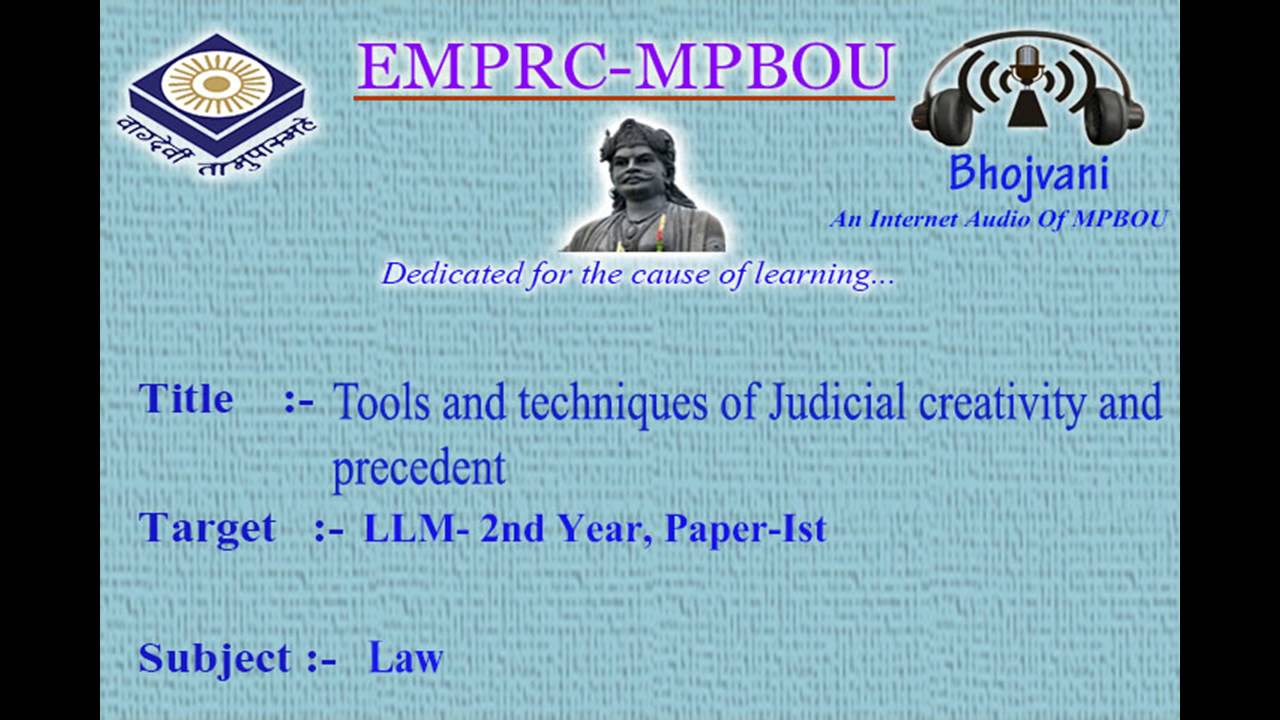
- #The tools and techniques of judicial creativity and precedent software
- #The tools and techniques of judicial creativity and precedent trial
Search in Google ScholarĬouncil of Europe. It’s Actually Not that Clear.” The Washington Post. “A Computer Program Used for Bail and Sentencing Decisions Was Labelled Biased against Blacks. Search in Google ScholarĬorbett-Davies, S., E. “Artificial Intelligence and the Transformation of Humans, Law and Technology Interactions in Judicial Proceedings.” Law, Technology and Humans 2 (1): 4–18. “Technological Due Process.” Washington University Law Review 85 (6): 1249–1313. ∼dlchen/papers/Machine_Learning_and_Rule_of_Law.pdf (accessed June 29, 2020). “Machine Learning and Rule of Law.” Computational Analysis of Law 27 (1): 15–42. “European Ethical Charter on the Use of Artificial Intelligence in Judicial Systems and Their Environment.” Council of Europe. Search in Google ScholarĬEPEJ (European Commission for the Efficiency of Justice).
#The tools and techniques of judicial creativity and precedent trial
“Online Dispute Resolution and Compliance with the Right to a Fair Trial and the Right to an Effective Remedy.” Technical Study on Online Dispute Resolution Mechanisms. Search in Google ScholarĬDCJ (European Committee on Legal Co-Operation). Translated to English by Selver, Paul, and Playfair, Nigel.” (accessed June 29, 2020). “Terug naar rechter van vlees en bloed dankzij techniek.” de Rechtspraak September 28, 2017.

“The System Only Dreams in Total Darkness: The Future of Human Rights Law in the Light of Algorithmic Authority.” In German Yearbook of International Law, Vol. Artificial Intelligence and Legal Analytics: New Tools for Law Practice in the Digital Age. “ Judge, Jury, and Execute File: The Brave New World of Legal Automation.” June 7, 2018. And It’s Biased against Blacks.” ProPublica.
#The tools and techniques of judicial creativity and precedent software
“Machine Bias: There’s Software Used across the Country to Predict Future Criminals.


“Predicting Judicial Decisions of the European Court of Human Rights: A Natural Language Processing Perspective.” Peer J Computer Science 2: e93. Corresponding author: Jasper Ulenaers LL.M., Universität Hamburg Fakultät für Rechtswissenschaft, Hamburg, Germany, E-mail: N., D.


 0 kommentar(er)
0 kommentar(er)
